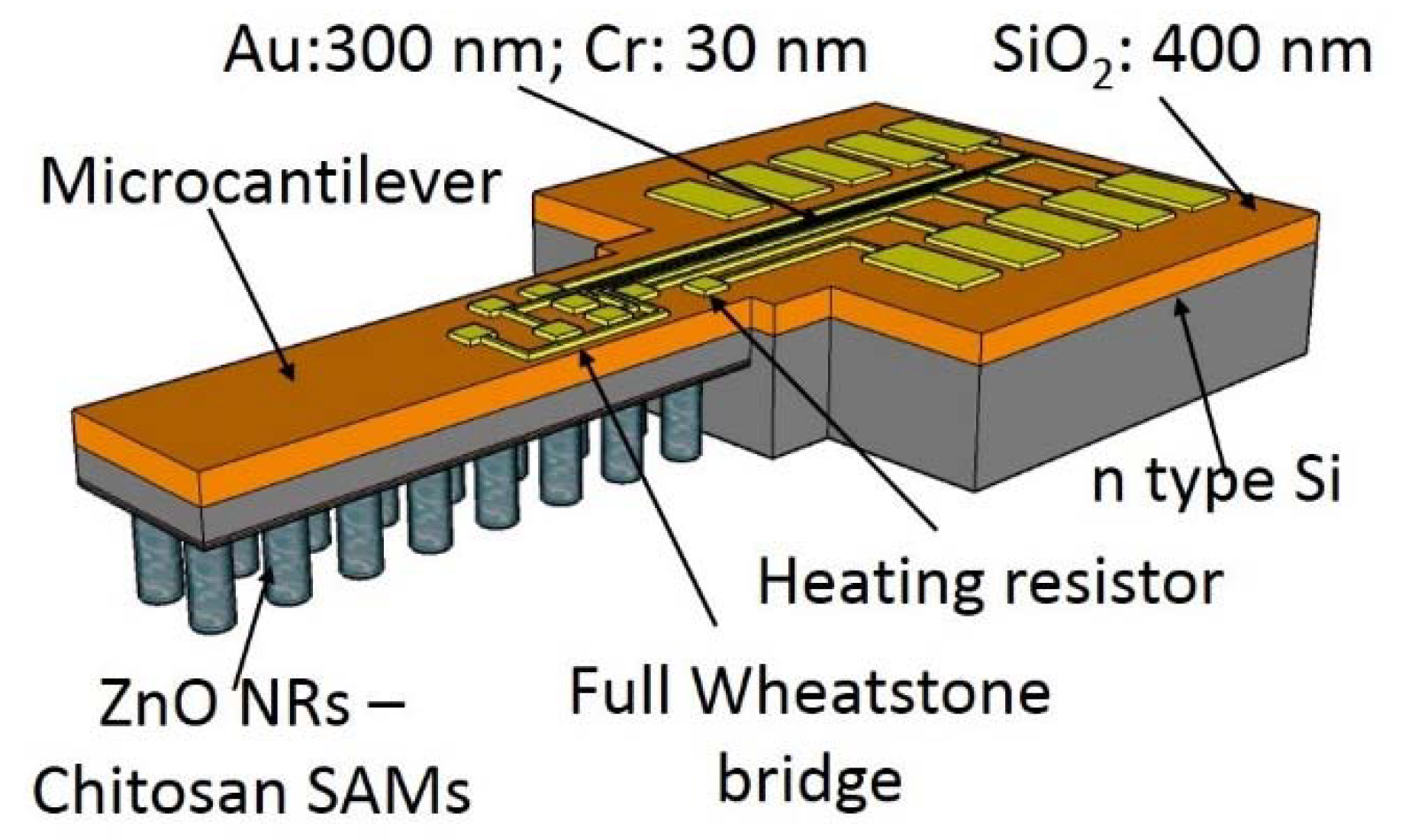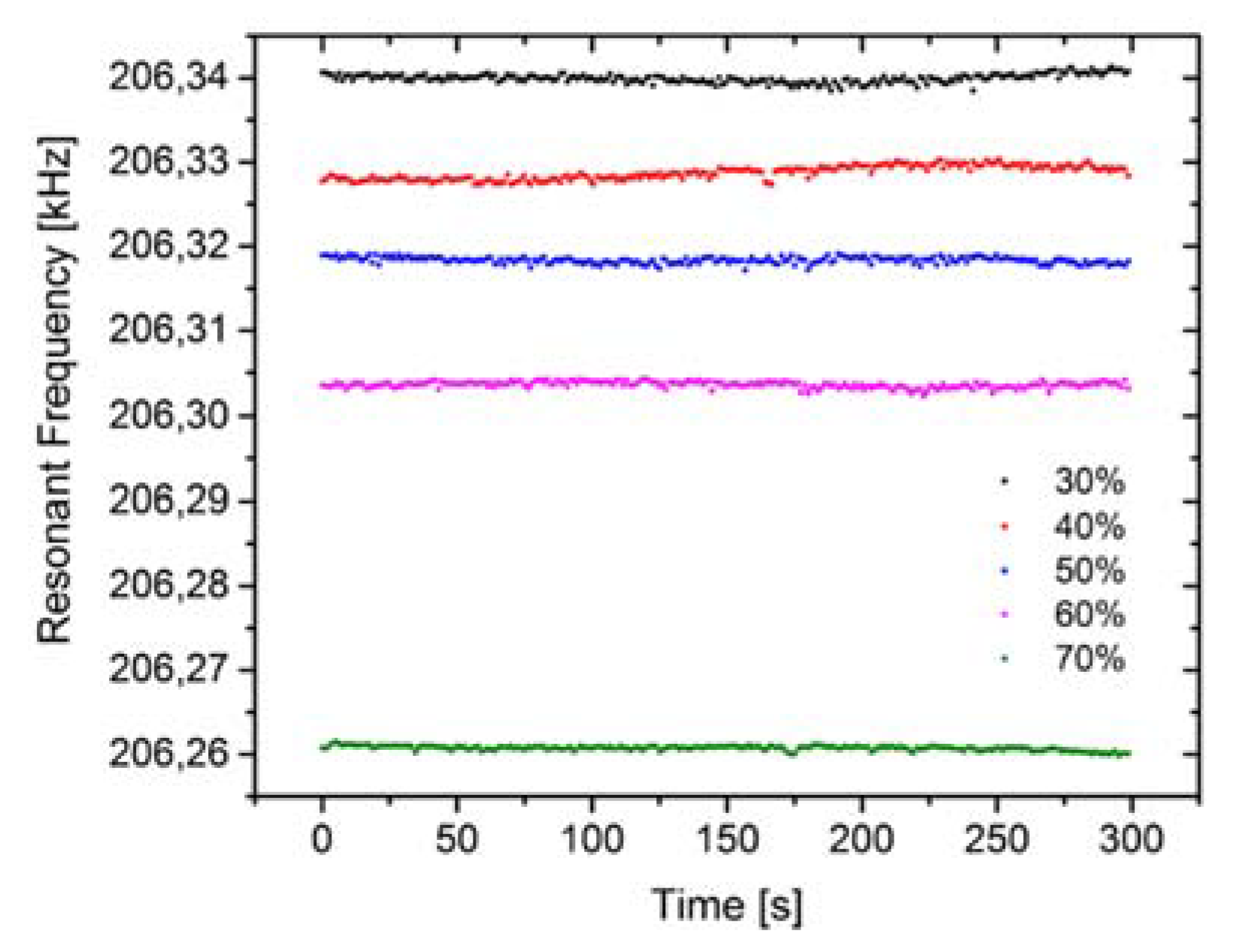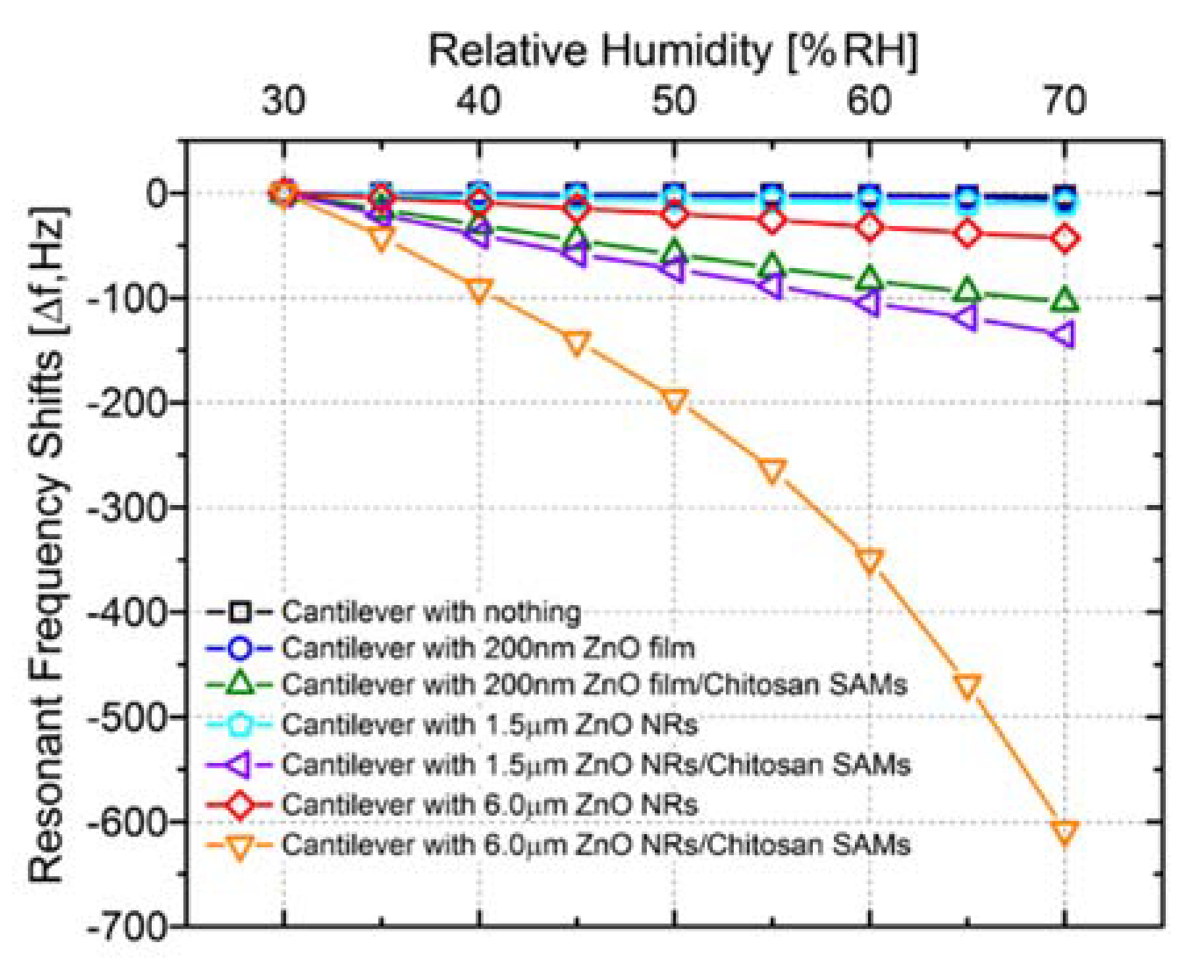Silicon Microcantilevers with ZnO Nanorods/Chitosan-SAMs Hybrids on Its Back Surface for Humidity Sensing †
Abstract
:1. Introduction
2. Experimental
2.1. Microcantilever Fabrication
2.2. Measurement Set-Up
3. Results and Discussion
3.1. ZnO Nanorods (NRs) Characterization
3.2. Sensing Performance
4. Conclusions
Reference
Author Contributions
Funding
Acknowledgments
Conflicts of Interest
References
- Kilinc, N.; Cakmak, O.; Kosemen, A.; Ermek, E. Fabrication of 1D ZnO nanostructures on MEMS cantilever for VOC sensor application. Sens. Actuators B Chem. 2014, 202, 357–364. [Google Scholar] [CrossRef]
- Xu, J.; Bertke, M.; Li, X.; Mu, H.; Zhou, H.; Yu, F.; Hamdana, G.; Schmidt, A.; Bremers, H.; Peiner, E. Fabrication of ZnO nanorods and Chitosan@ZnO nanorods on MEMS piezoresistive self-actuating silicon microcantilever for humidity sensing. Sens. Actuators B Chem. 2018, 273, 276–287. [Google Scholar] [CrossRef]
- Xu, J.; Bertke, M.; Gad, A.; Yu, F.; Hamdana, G.; Bakin, A.; Peiner, E. Fabrication of ZnO nanoroads on MEMS piezoresistive silicon microcantilevers for environment monitoring. Proceeding 2017, 1, 290. [Google Scholar]
- Xu, J.; Bertke, M.; Li, X.; Mu, H.; Peiner, E. Self-actuating and self-sensing ZNO nanorods/chitosan coated piezoresistive silicon microcantilever for humidity sensing. In Proceedings of the 2018 IEEE Micro Electro Mechanical Systems (MEMS), Belfast, UK, 21–25 January 2018; pp. 206–209. [Google Scholar] [CrossRef]





Publisher’s Note: MDPI stays neutral with regard to jurisdictional claims in published maps and institutional affiliations. |
© 2018 by the authors. Licensee MDPI, Basel, Switzerland. This article is an open access article distributed under the terms and conditions of the Creative Commons Attribution (CC BY) license (https://creativecommons.org/licenses/by/4.0/).
Share and Cite
Xu, J.; Bertke, M.; Li, X.; Setiono, A.; Fahrbach, M.; Schmidt, A.; Peiner, E. Silicon Microcantilevers with ZnO Nanorods/Chitosan-SAMs Hybrids on Its Back Surface for Humidity Sensing. Proceedings 2018, 2, 838. https://doi.org/10.3390/proceedings2130838
Xu J, Bertke M, Li X, Setiono A, Fahrbach M, Schmidt A, Peiner E. Silicon Microcantilevers with ZnO Nanorods/Chitosan-SAMs Hybrids on Its Back Surface for Humidity Sensing. Proceedings. 2018; 2(13):838. https://doi.org/10.3390/proceedings2130838
Chicago/Turabian StyleXu, Jiushuai, Maik Bertke, Xuejing Li, Andi Setiono, Michael Fahrbach, Angelika Schmidt, and Erwin Peiner. 2018. "Silicon Microcantilevers with ZnO Nanorods/Chitosan-SAMs Hybrids on Its Back Surface for Humidity Sensing" Proceedings 2, no. 13: 838. https://doi.org/10.3390/proceedings2130838





